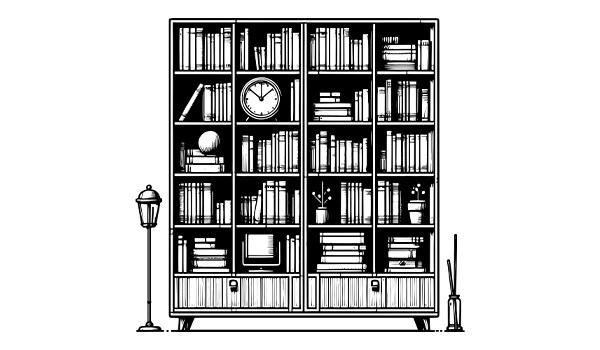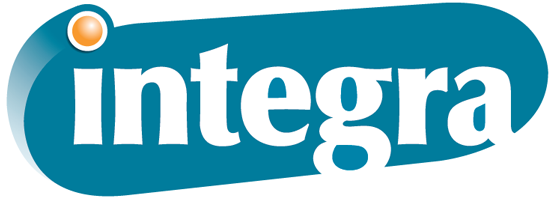Hardcover vs. Softcover Book Printing — Which Is Right for You?
May 8th, 2024 | 4 min read

When it comes to publishing your book, one of the first and most crucial decisions you'll face is whether to opt for a softcover or a hardcover. Both options have distinct advantages and implications for cost, appearance, durability and audience perception, but which one is right for you? And what do you need to know about the book choice you make?
Here at Integra, we've answered these questions and countless others for authors and businesses both new and seasoned in the publication space. We're here to do the same for you.
In this blog post, we'll break down the major differences between softcover and hardcover books, emphasizing:
- Softcover book advantages
- Common uses for softcover books
- Types of book binding for softcover books
- Hardcover book advantages
- Common uses for hardcover books
- Types of book binding for hardcover books
- Choosing between softcover vs. hardcover books
Understanding these differences can help you make an informed choice that aligns with your book's purpose and your budgetary constraints. Let us put your mind at ease about this common comparison, so you can get back to what you do best — writing the book in the first place!
Softcover Book Printing
We've covered all the most important details about softcover book printing in our blog post about this style of book. Here, we'll give you a quick recap that emphasizes the standout features of softcover books over hardcover books.
Advantages:
Some of the most well-loved advantages of softcover books include:
- Cost-effectiveness: Softcover books are generally less expensive to produce than hardcover books. This makes them a popular choice for authors looking to minimize upfront costs, especially for large print runs.
- Flexibility and portability: Lightweight and bendable, softcover books are easy to handle and carry around, which is ideal for travel or trade shows.
- Faster production times: The production process for softcover books is usually quicker, allowing for faster turnaround times from manuscript to finished product.
Wondering how long your book might take with Integra Graphics Synergy? Check out our turnaround calculator below for a personalized estimate!
Common Uses for Paperback Books
Some of the most common softcover book types include:
- Novels and mass-market publications
- Business trade books
- Promotional materials
- Corporate reports
- Manuals and textbooks, particularly where cost is a factor
Binding Options
If you've chosen a softcover publication, here are the types of book bindings you can consider:
- Perfect binding: The most common type of softcover binding, where the pages and cover are glued together at the spine with a strong yet flexible adhesive.
- Saddle stitching: Suitable for smaller booklets and brochures, involving staples through the center fold.
- Spiral and comb binding: These methods allow the book to lay flat when open, ideal for manuals and workbooks.
Hardcover Books
You can learn everything you need to know about hardcover book printing in our article on the topic. For the purposes of this piece, we'll cover the most important distinctions that help hardcover books stand out from their softcover counterparts.
Advantages
Hardcover books offer plenty of benefits, including:
- Durability and longevity: Hardcover books are robust and bound to last longer. This durability makes them suitable for repeated use and works that are intended to be kept for a long time.
- Aesthetic appeal: A hardcover provides a sense of prestige and can significantly enhance the perceived value of a book, making it more attractive to collectors and suitable for display.
- Variety in binding: Hardcover books offer several high-quality binding options that can add to the book's durability and aesthetic, such as Smyth sewing and case binding.
Common Uses
Along with hardcover children's book printing, you'll often see the following types of books toting a hardcover:
- Literary and genre fiction intended for a long shelf life
- Academic and professional reference books
- Coffee table books and other display-oriented publications
Binding Options
Once you've chosen a hardcover book, you should think through these common binding solutions:
- Case binding: The standard hardcover option, where pages are sewn together and attached to a hard outer cover.
- Adhesive case binding: A durable version of perfect binding used for hardcover books, involving stronger glues.
- Smyth sewing: Offers the highest durability, where pages are sewn with thread before being attached to the cover, allowing the book to lay flat.
Choosing Between a Softcover vs. Hardcover Book
If you've made it here, you've learned some of the more technical and design-related facts surrounding hardcover vs. softcover book printing. Now, let's break down the different questions and considerations you might keep top of mind as you're choosing the best fit for your publication.
Consider Your Audience
At the end of the day, the way your audience receives your book is everything. Remember these guidelines:
- If your readers are likely to prefer a more portable and affordable option, a softcover is suitable.
- If your target audience values collectability or durability, such as libraries or book collectors, a hardcover may be more appropriate.
Know the Purpose of Your Book
Why publish a book in the first place if you can't identify a goal for the publication? We're sure you have a goal in mind — let's see where your book fits in these two categories:
- For a textbook or manual that will be used frequently and needs to withstand wear and tear, a hard cover might be the better option.
- For a novel or memoir intended for wider distribution, a soft cover can reduce costs and make distribution easier.
Keep Your Budget at the Forefront
No matter how perfect the book in your mind might be, it won't be the book that shows up in real life if you don't have the budget for it. Remember to consider your budget and the following details:
- Softcover books can significantly reduce your print expenses, especially beneficial for new authors or those publishing independently without a guaranteed sales volume.
- Hardcover books, while more expensive, might justify the cost with a higher retail price point, beneficial in genres where readers expect a premium product.
Come up With a Distribution and Marketing Plan
Both softcover and hardcover books can be produced in short-run or long-run batches, but they come with their own distinct niches in terms of feasibility:
- Softcovers may offer advantages in online retail environments due to lower shipping costs.
- Hardcovers might be preferable for presentations, signings or when a high-quality appearance can enhance marketing efforts.
Find a Book Printer Who Specializes in the Book Cover of Your Choosing
When you landed on this blog, you may have had no idea which way to lean in the softcover vs. hardcover books debate. We hope we've managed to smooth over some of the critical decision-making moments by explaining the most consequential differences between these two book styles.
Ultimately, the choice between softcover and hardcover should be guided by your book's intended use, your audience's preferences and your overall publishing goals. By carefully weighing these factors, you can select a binding and cover style that not only meets your practical needs but also enhances the reception of your work in the marketplace.
Want to learn how to find the perfect printer for your unique book printing project? Check out our article on the most important questions to ask a book printer before they take on your publication.
Ready to dive in on your own project with the book printing experts at Integra Graphics Synergy? Reach out with your project details below!
Topics:



